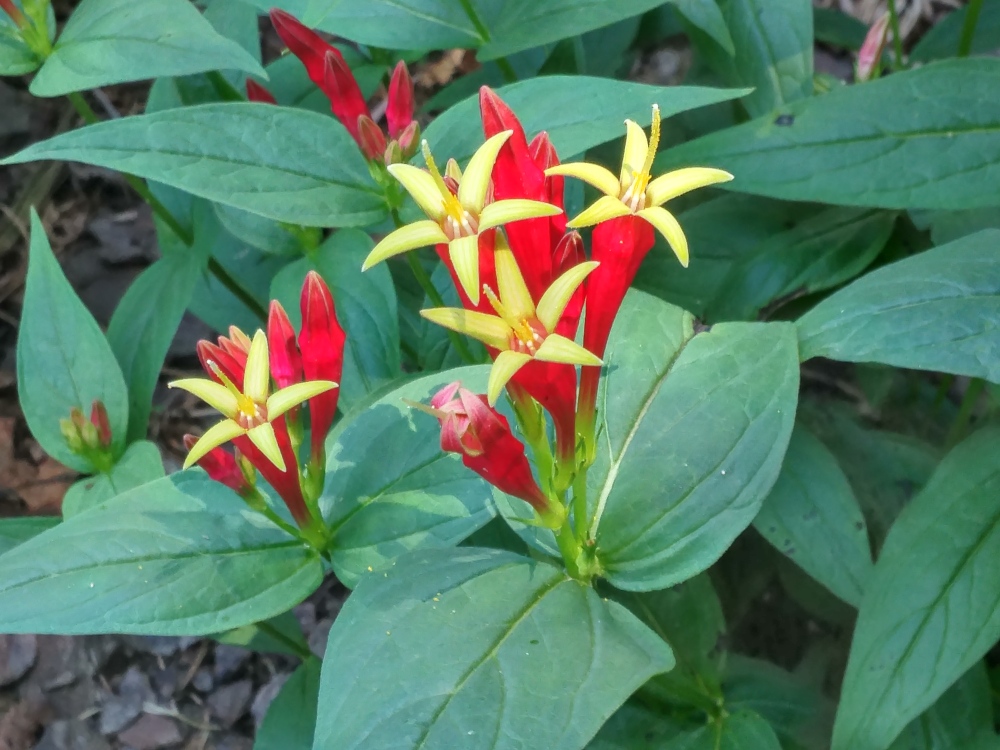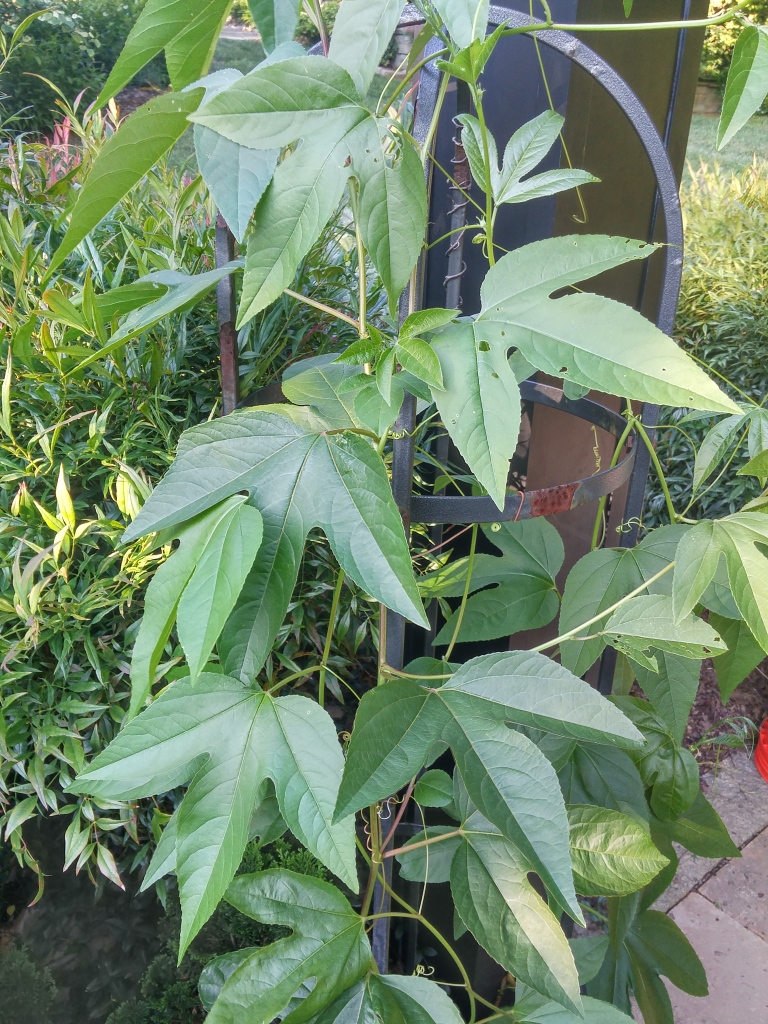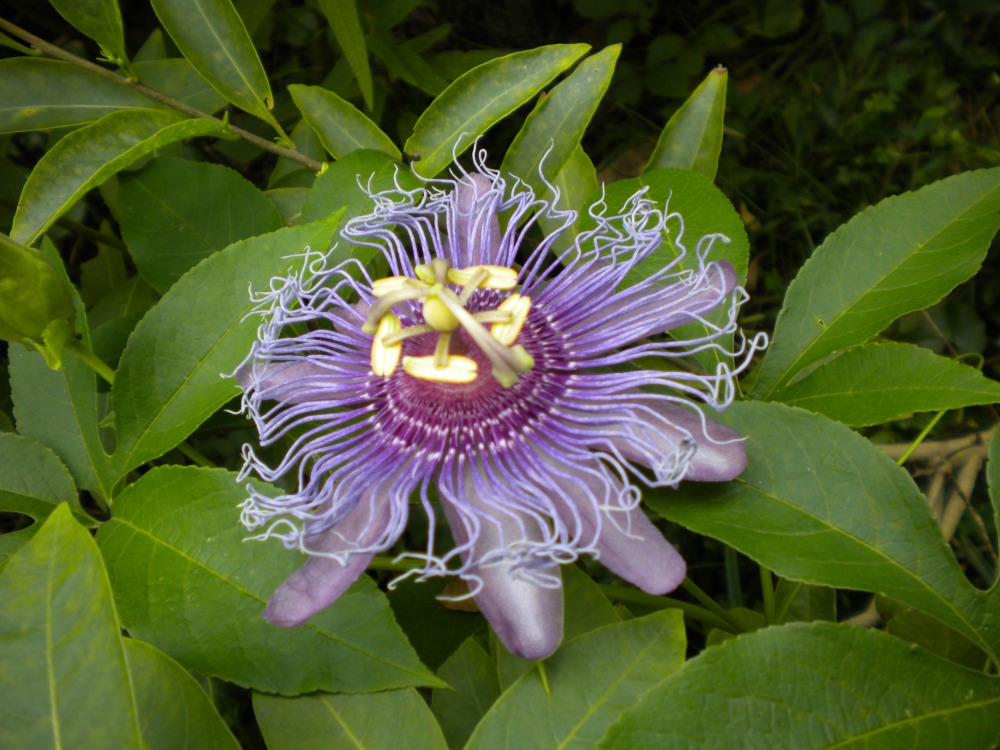While showy flowers of Indian pinks (Spigelia marilandica, below) catch the attention and favor of visitors, the clump forming native is rarely seen in garden stores. When found, the buying public generally, but inexplicably ignores it.
The first planting of Indian pinks in the garden was disappointing, though not entirely unsuccessful. While planting, I imagined a quickly spreading clump, but a single plant did little more than survive. Perhaps the culprit was consecutive harsh winters, a bit too much sun, or insufficient moisture, but whatever, I was determined and a handful more were purchased when they appeared in the garden center. I am quite pleased to mention that these have grown marvelously, and within a few feet of the first clump that has also grown with vigor.
The passionflower vine (Passiflora incarnata, above, and flowers, below) has spouted growth earlier than usual in this early summer. In recent years, and in any spring that follows winter temperatures that have dropped near zero, the vine emerges from its roots in late spring, often late enough into June that the gardener gives up and declares it is lost. For some unknown reason (and most reasons in the garden are unknown, it seems), growth has emerged from a single growth point in contrast to recent years when suckers first appeared several feet from the vine’s central crown. Stray sprouts are snapped off lest the vigorous vine be more difficult to manage, and finally the main stem appears and grows like a weed, as it’s said.
But, this year only the main stem has grown, and with a mild winter and early spring the vine began growth earlier. Now, the vine is to the top of its support, and beginning to grow along the ceiling of the aluminum summerhouse. With an earlier start there is no reason to expect that it will not grow past the wire support at the far corner post that has been sufficient in prior years. At this point of growth, which is typically reached in mid July, the Japanese beetles have usually begun to feast on the lush foliage of the passionflower, but today the leaves are unmarked with beetles several weeks off.
The yellow passionflower (Passiflora lutea, above) on the far side of the koi pond has grown far up into the early spring flowering ‘Okame’ cherry. A sprawling Oakleaf hydrangea (Hydrangea quercifolia) has grown wide enough that it is nearly impossible to get near the yellow flowering vine without risking a plunge into the pond. Unfortunately, the flowers are much smaller than the purple flowered passionflower, so they cannot be readily seen from a distance, and I’ve considered planting a second vine in a spot where it is more easily accessed.
While the purple flowered passionflower vine is started under a steel obelisk, the yellow version was planted to fend for itself, to clamber along the ground and up through low branches of the hydrangea. A year ago it grew in every direction, with stems that climbed into the cherry and others that crossed the front of the small waterfall of the koi pond. I do not see any stems in this direction, but only up into the cherry.
In the case of any passionflower, there is no need for it to be given a support structure as long as lower branches are available for tendrils to grab onto. The stems are lightweight, and since they die to the ground in winter there is no danger that the supporting plant will be injured. While flowers are most obvious on a structure, blooms are greatly appreciated in late July and August growing from some unremarkable evergreen that hosts the vine.
Do you get fruit from the passionflower? We have a passion fruit plant that grows from our neighbors yard. The flowers are so beautiful, but don’t seem to last long.
Yes, there are one or two fruits each year, though I’ve never been able to figure when they’re ripe. Certainly, there are vines that flower for a longer period, but none with flowers as beautiful. In northern Virginia we have only a few cold hardy types, but you will probably have many more choices.